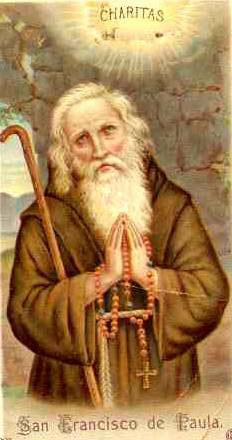 Dear readers, Catholic Online was de-platformed by Shopify for our pro-life beliefs. They shut down our Catholic Online, Catholic Online School, Prayer Candles, and Catholic Online Learning Resources essential faith tools serving over 1.4 million students and millions of families worldwide. Our founders, now in their 70's, just gave their entire life savings to protect this mission. But fewer than 2% of readers donate. If everyone gave just $5, the cost of a coffee, we could rebuild stronger and keep Catholic education free for all. Stand with us in faith. Thank you. Help Now >
Dear readers, Catholic Online was de-platformed by Shopify for our pro-life beliefs. They shut down our Catholic Online, Catholic Online School, Prayer Candles, and Catholic Online Learning Resources essential faith tools serving over 1.4 million students and millions of families worldwide. Our founders, now in their 70's, just gave their entire life savings to protect this mission. But fewer than 2% of readers donate. If everyone gave just $5, the cost of a coffee, we could rebuild stronger and keep Catholic education free for all. Stand with us in faith. Thank you. Help Now >
University of Coimbra
FREE Catholic Classes
The earliest certain information concerning a university in Portugal dates from 1288, when the Abbott of Alcobaza, several priors of convents, and parish priests, made known to Nicholas IV that they had obtained from King Diniz the foundation of a "Studium Generale" at Lisbon and had arranged among themselves to defray the salaries of the doctors and masters from the revenues of their monasteries and churches; they besought the pope to confirm this agreement and to protect the work they were undertaking "for the service of God and the glory of their country". In a Bull of 9 August, 1290, addressed to the "University of the masters and students of Lisbon ", the pope acceded to their request and expressed his satisfaction with the creation of this new seat of studies. This Bull sanctions taxation of lodgings in the Paris and Bologna fashion, grants dispensation from residence to masters and students and authorizes the Bishop of Lisbon (or, sede vacante , the Vicar-capitular), to confer the jus ubique docendi on all faculties except Theology. Frequent quarrels between the students and the citizens led the King of Portugal to request the pope to transfer the new school to Coimbra, a more tranquil place, and to grant at the same time to the new foundation, all of the "privileges" of the former one. The transfer took place 15 February, 1308, on which date King Diniz issued the charter of foundation, quite similar to that of Alfonso the wise for the University of Salamanca in Castile. The sciences then taught at Coimbra were canon and civil law, medicine, dialectic, and grammar. Theology was taught in the convents of the Dominicans and the Franciscans. For reasons unknown to us, the university was again moved to Lisbon in 1339, by order of Alfonso IV. In 1354 it returned to Coimbra, only to be transferred to Lisbon in 1377. From this time until its final transfer to Coimbra in 1537, the university enjoyed greater prosperity. At the beginning of the fifteenth century theology appears regularly as one of the sciences taught there.
During the reign of John III (1521-57) important reforms were carried out, and the university reached the acme of its career. The faculties hitherto widely scattered in different edifices were brought together under one roof in the "Palacio del Rey", new and illustrious professors were invited from Castile ; for the faculty of theology, Alfonso de Prado and Antonio de Fonseca, the latter a doctor of Paris ; for the faculty of law the famous canonist Martin de Aspilcueta (Doctor Navarrus), Manuel de Costa, and Antonio Francisco Suárez, all three from Salamanca; and for medicine Francisco Franco and Rodrigo Reinoso. The classical languages and literatures were taught in the Colegio de la Artes, as a preparation for the graver studies of the university ; this college was at first quite independent of the latter, but was eventually incorporated with it and confided to the Jesuits. One of its first professors was the Scotch Latinist, George Buchanan, later a follower of John Knox and a reviler of Mary Stuart. The colleges of Sïo Pedro and Sïo Paolo were founded for graduates (doctors) who purposed to devote themselves to teaching; other colleges were founded for the students of various religious orders in which they might follow the common life while pursuing their studies at the university. New reforms were inaugurated in 1770, when (23 December) King José I, on the initiative of the Marquis de Pombal , appointed a commission to consider the reorganization of the university. The commission advised the creation of two new faculties, mathematics and natural philosophy, leaving intact the older faculties of theology, canon law, civil law, and medicine. New professors were brought from Italy, Michele Franzini for mathematics, and Dominican Vandelli for natural history. The former Jesuit college, confiscated at the time of the expulsion of the Society from Portugal, was turned over to the faculty of medicine for its clinics and laboratories. The laboratories for physics, chemistry, and natural history were also located there; finally a botanical garden was added. At the end of the eighteenth century, metallurgy was taught by José Bonifacio de Andrade, and hydraulics by Manoel Pedro de Mello, both scholars of repute. In 1907 the University of Coimbra had five faculties, theology, law, medicine, mathematics, and philosophy. Its professors numbered (1905-06) 68, and its students 2916. The library now contains about 100,000 volumes. (See CONIMBRICENSES.)
Join the Movement
When you sign up below, you don't just join an email list - you're joining an entire movement for Free world class Catholic education.

-

- Stations of the Cross
- Easter / Lent
- 5 Lenten Prayers
- Ash Wednesday
- Living Lent
- 7 Morning Prayers
- Mysteries of the Rosary
- Litany of the Bl. Virgin Mary
- Popular Saints
- Popular Prayers
- Female Saints
- Saint Feast Days by Month
- Pray the Rosary
Pope Francis’ April Prayer Intention: Using Technology to Strengthen Human Connections
Finding Peace Through Prayer in a World of Worry
Trump Administration Withholds Federal Grants from Planned Parenthood Over DEI and Civil Rights Concerns
Daily Catholic
 Daily Readings for Wednesday, April 02, 2025
Daily Readings for Wednesday, April 02, 2025 St. Francis of Paola: Saint of the Day for Wednesday, April 02, 2025
St. Francis of Paola: Saint of the Day for Wednesday, April 02, 2025 Prayer for God's Help in Daily Actions: Prayer of the Day for Friday, March 14, 2025
Prayer for God's Help in Daily Actions: Prayer of the Day for Friday, March 14, 2025 Daily Readings for Tuesday, April 01, 2025
Daily Readings for Tuesday, April 01, 2025 St. Hugh of Grenoble: Saint of the Day for Tuesday, April 01, 2025
St. Hugh of Grenoble: Saint of the Day for Tuesday, April 01, 2025- To Perceive Animals as God's Gifts: Prayer of the Day for Thursday, March 13, 2025
![]()
Copyright 2025 Catholic Online. All materials contained on this site, whether written, audible or visual are the exclusive property of Catholic Online and are protected under U.S. and International copyright laws, © Copyright 2025 Catholic Online. Any unauthorized use, without prior written consent of Catholic Online is strictly forbidden and prohibited.
Catholic Online is a Project of Your Catholic Voice Foundation, a Not-for-Profit Corporation. Your Catholic Voice Foundation has been granted a recognition of tax exemption under Section 501(c)(3) of the Internal Revenue Code. Federal Tax Identification Number: 81-0596847. Your gift is tax-deductible as allowed by law.


 Daily Readings for Wednesday, April 02, 2025
Daily Readings for Wednesday, April 02, 2025 St. Francis of Paola: Saint of the Day for Wednesday, April 02, 2025
St. Francis of Paola: Saint of the Day for Wednesday, April 02, 2025 Prayer for God's Help in Daily Actions: Prayer of the Day for Friday, March 14, 2025
Prayer for God's Help in Daily Actions: Prayer of the Day for Friday, March 14, 2025 St. Hugh of Grenoble: Saint of the Day for Tuesday, April 01, 2025
St. Hugh of Grenoble: Saint of the Day for Tuesday, April 01, 2025

